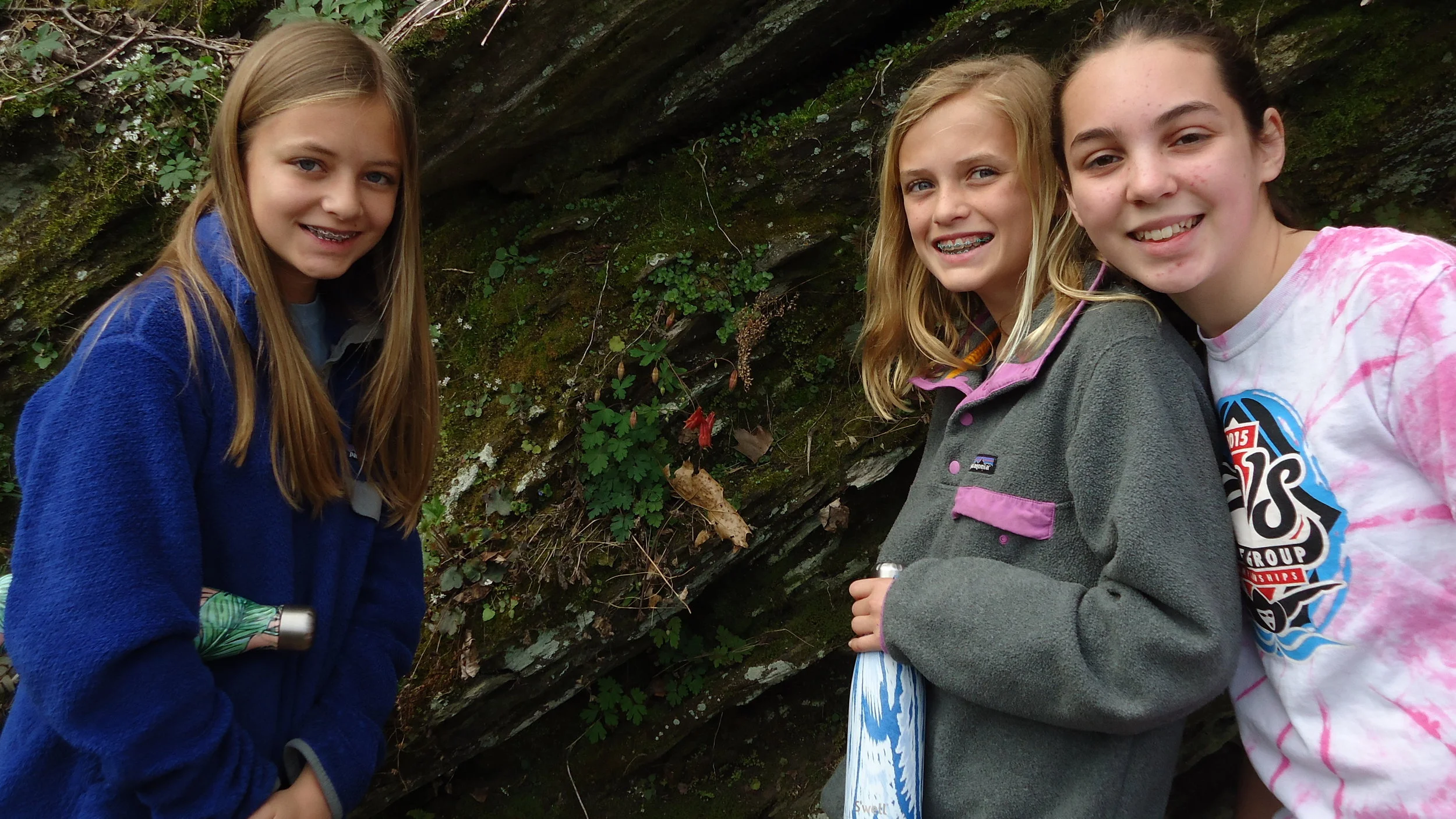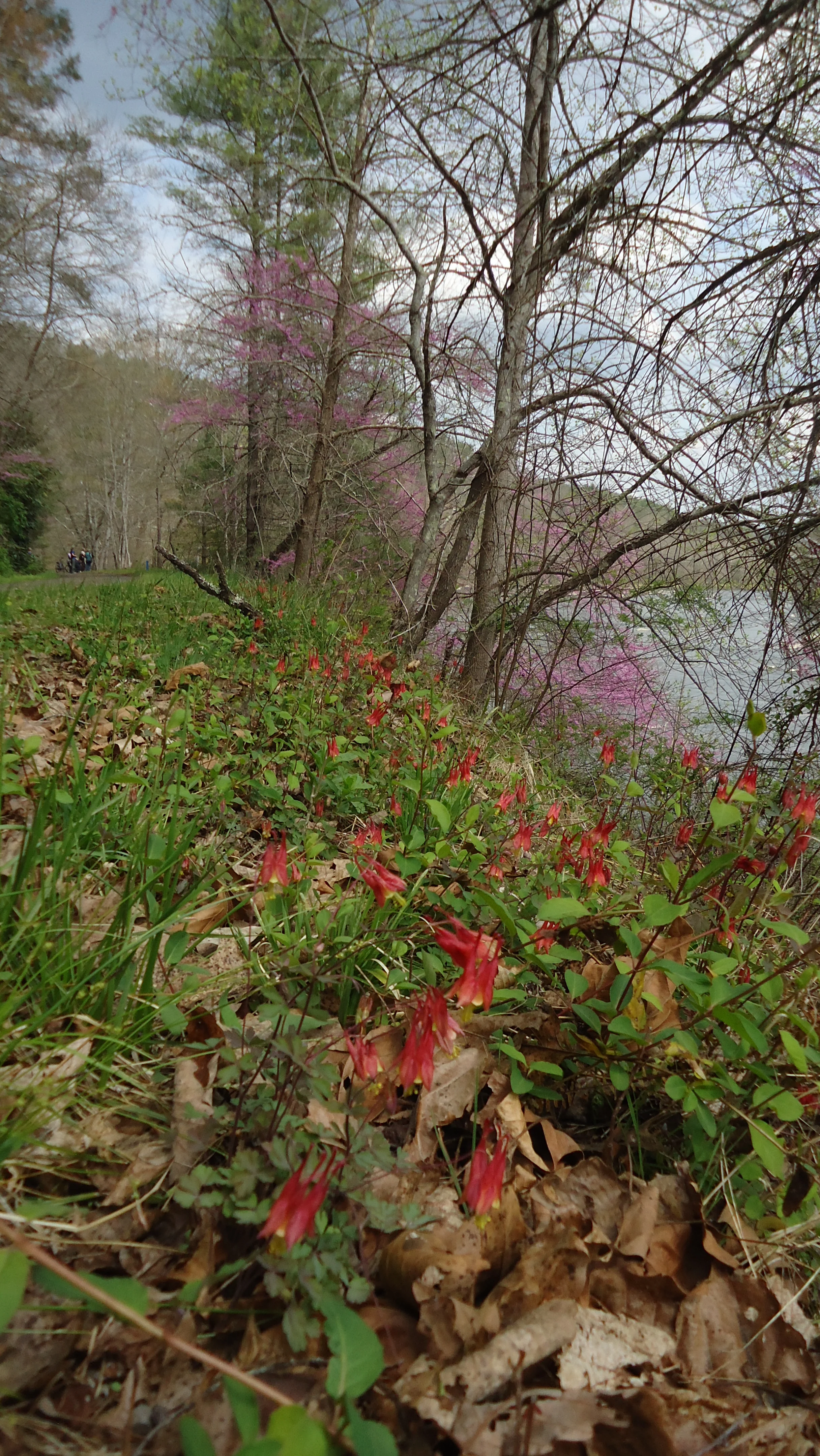Early Spring Wildflowers on the New River Trail
On Easter Saturday, 23 people joined Blue Ridge Discovery Center’s Explorers Club for our annual wildflower walk on the New River Trail. The 57-mile trail is the state’s “most narrow state park,” and the section between Low Water Bridge near Fries and Fries Junction, where a 12-mile spur trail heads to Galax, is a special spot for early spring wildflowers. Hike leader Carol Broderson briefly discussed the history of botanizing in Virginia and the fate of the “great forest” that covered the Appalachians.
Co-leader Snow Ferrenia has made a life career of plants and was formerly in charge of the woodland garden at the New York Botanical Garden. In addition to plant identification, Snow shared the history of many of the invasive plant species that we saw along the roadsides. Some of our younger participants helped in the control effort by gathering garlic mustard to make pesto.
The earliest spring wildflowers, like bloodroot, cutleaf toothwort and bluets, were on the wane, but, from the genus Trillium, we saw whole hillsides of wake robins, in shades from red through pink to white. These purple trilliums are also called “Stinking Benjamin” due to a wet dog odor that attracts insects for pollination. Wild ginger also appeals to insects with its ground-hugging brown blossoms.
Also in the running for most profuse was Dutchmen's breeches, a member of the bleeding heart family. We saw another family member, yellow corydalis. And early saxifrage was living up to its reputation as “rock breaker” on all of the cliff faces.
Golden ragwort and spring beauty lined the trail sides. Spring beauty, Clatonia virginica was named after Virginia’s first internationally famed botanist, John Clayton, who corresponded with Linneaus and Thomas Jefferson.
Colonies of mayapples popped up everywhere. We noted the rule that the mayapple needs two leaves before the white bloom will appear in the middle, but then we found the exception with just one leaf and a bloom. We noted the inconspicuous brown bloom of blue cohosh and discussed its use as a medicinal.
Late spring wildflowers, columbine, fire pink and wild geranium, were beginning their bloom season. High up, serviceberry heralded spring, and in the understory, Carolina silver bell and red bud lit up the woods.
















